About
“quartets online” is an online art piece created at Yamaguchi Center for Arts and Media [YCAM] in 2020. The performance is generated and streamed in real-time by a computer and can be played simultaneously around the world over the Internet, while the performance is always played in new combinations without repetition.
This work has its roots in the piece called “quartets”, which was produced and presented at Yoshihide Otomo's exhibition “Otomo Yoshihide / ENSEMBLES” held at YCAM in 2008. “quartets” is an installation consisting of a cube with four screens in the center of a studio and four-sided screens around its periphery. A total of eight images and nine speakers including one inside the cube. It was also toured and exhibited at the NTT InterCommunication Center[ICC] in Tokyo and Bangkok Arts and Culture Center BACC in Bangkok.
“quartets” was recorded and produced in 2008, and Otomo instructed each performer to “play solo, but imagine the presence of other performers”. In other words, it is “solo in ensemble with the sounds of imaginary others”. The performers' videos are directed by the artist Yuki Kimura and are represented by shadows lit from behind the performers in subtly swinging lights. In the installation version, artist Norimichi Hirakawa develops an algorithm to determine the different combinations of the performers' shadow, the order of performance up to four from eight performers, and on which screen they were combined. The artist Benedict Drew was projecting videos onto four screens placed around the periphery of the venue. It showed how the performers’ sounds playing on the central screens directly in front were vibrating wood, steel and liquid through the speakers. One of the exhibition features was that viewers who entered the space could hear all the sounds at the same time, but could not see all the images at once.
This “quartets online” is a work of art that exists on the Internet, making the traditional “quartets” available worldwide. It is not merely a video recording of installation, but an original artwork created by re-creating the performance algorithms and the videos’ direction. Otomo and YCAM discuss the idea for this online version shortly after releasing the original version. For Otomo, who expresses himself through improvisations, making music that is different from live performances by a real body and records and CDs has always been a theme that he has explored.
One form of expression that was greatly influenced by the outbreak of COVID-19 and the social response in 2020 was music. How does music sound in a world where people are not allowed to gather? The timing of the agreement between the artists and YCAM to create an online version of “quartets”, in which each artist plays while imagining the invisible others, is the result of a concerted effort to innovate the expression in response to the times constantly.
“quartets online”, which being generate and stream in real-time by a computer, is not only a work where the audience can hear improvisation from all over the world at the same time but also has a lot of room for the audience to participate. There is no direct interaction, but the rhythm and melody are not organized clearly, and the delicate sound that seems to be on the verge of becoming music continues. This leaves room for the audience to listen to subtle variations in the sound, be surprised by the combinations' freshness, and build impressions and interpretations..
In a situation where you have to think about the distance between people, people may listen to delicate performances and imagine someone far away through this piece. I hope that one piece of work can inspire the imagination of others.
Message from Otomo Yoshihide
“quartets”, a work born out of the ENSEMBLES exhibition held at YCAM for three months in 2008, has been resurrected online after 12 years.
We had the idea of an online version itself very early in the process. One of the main reasons why it didn't come to fruition was that, although I didn't say it, somehow I thought there was nothing better than an actual, real-life exhibition. Now that recorded works that allow everyone in the world to have the same music listening experience have become central to the musical experience, I thought it would be nice to have a different way of listening to the playback of recorded works. Only those who come to the venue will experience it, and no one else will have the same experience... I thought it would be a good idea to consider this work as a piece of music that is different from both a recording and a concert, so this work has been for exhibition only.
However, the initial impetus for creating an online version was the fact that it was difficult for people to get together to have such a unique experience amid the COVID-19 pandemic. During the production process, the online version’s inconvenient conditions made it necessary to cut down on the information to an extreme degree, which made me realize that the focus would be more on the music playback compared to the real exhibition. So I started to think that I could find a different way of music playback (saisei – the same word as “bringing back to life” in Japanese) than listening to music through the playback of recorded sound sources, which is already saturated on the Internet these days. A piece of music that is always in a different state, although it can be accessed at any time. A recorded piece that has no beginning or end, and never ages, and continues to generate improvisations forever in the Internet space even though it is not AI. A music playback device full of such contradictions. Before I knew it, we had created a work that was completely different from the exhibition version.
At the same time, it is also true that making this work has made me want to bring it into a real exhibition space again. Maybe then it will appear as a different exhibition than before.
Credits
quartets online (2020)
The artwork will not be available on January 12, 2021 due to the server maintenance.



quartets (2008)
Talk (Recorded on 12 Aug 2020)
How “quartets” was made
Takayuki Ito (Technical Director at YCAM): Yes, at the NTT ICC in Tokyo and the BACC in Bangkok.
Otomo: We haven't exhibited in other places as much as we would have liked. In this COVID-19 pandemic, many events are only allowed to be held online, so when Mr. Ito from YCAM told me about this idea, I was like, “Finally!”. But in my mind, these performers kept playing all this time. It's like they have been playing out of sight for a long time but finally came out. It's the same as it was in 2008, including myself, so it's interesting that they're still playing even though they are frozen at that moment.
Daiya Aida (Artistic Director at YCAM): Is this pattern of not imagining the end unique to this work?
Otomo: My concerts, for example, have a beginning and an end; it takes about an hour per act. But my exhibitions have no beginning or end. However, I had this idea that this piece has been going on forever since the beginning.here will never be the same moment again—although there might be with astronomical probability—and it will continue to be generated. I think it's also interesting that an AI does not generate it.
Aida: How about you, Mr. Hirakawa? Are there any changes the way you feel about it, including the difference in perspective between 2008 and the present situation?
Norimichi Hirakawa (Artist/Programmer): I think it's been 12 years since I ran the program and listened to the sound last time. So this time, I listened to it again after some time had passed.he moment I ran the program, I actually felt like the sound had been playing all that time, and it instantly brought back the impression of this work, including the memories of the time when it was created. The work's interpretation and impression could change over time, but this work never gets old, or you could say it's already been old from the beginning.
Otomo: Exactly.
Hirakawa: The one we did at YCAM is considered the original, but I felt that there is a kind of work that the idea will never change and will continue forever, even though the form of the work is changeable.
Imagining the people watching at the same time
Otomo: We had the idea of using shadows from the beginning. Shadow art itself is a very old idea.
They used to have shadow art in the neighborhood when I was a child, which might have something to do with it. I'm sure there were other options besides shadow art, but they didn't feel right to me. I wanted to have as many elements as possible that the creator couldn't control. I wanted everything to appear different depending on the viewer and the viewing angle.
Originally, the human shadows were close to life-size, and when we had the exhibition at YCAM, a disabled child thought that there were people behind them, which made me happy. Also, the exhibition version has four screens on different sides, so no one can see all of them at once. But on a flat surface, you could see everything. So until I first saw the prototype Mr. Hirakawa sent me, I wasn't sure how it would look and sound to be honest.
Aida: I think music’s roots are prayers or thoughts and feelings about someone you can't see. Could you tell me how you instructed each performer when you recorded the music?
Otomo: We hadn't experienced either the Great East Japan earthquake or the new coronavirus pandemic at the time, so I wasn't thinking about prayer or anything. Well, even if we had, I wouldn't give such instructions. The instructions I gave to the performers were like, “Basically, I want you to play solo. But the difference from a normal solo is that there is someone else playing, it could be three or four, but just keep in mind that there is someone else playing”. They don't need to imagine the sounds others were going to make or what they were going to do at all. I thought that was better than just telling them to “open the gap”. That was really about it. But we all knew each other, so I think they knew what the others were going to do. I only gave a little bit of a melody line to Ms. Kahimi, which was the only musical instruction.
I think I asked her to leave some space in between instead of singing it normally. Probably because the vocals are so strong, I felt like all the other performances would sound like an accompaniment, so I wanted her to sing with a voice that is just about to become a song.
Aida: The whole thing feels like music just before it becomes music.
Otomo: As a result, everyone played the piece as if it was on the verge of becoming music. But I didn't even give them that instruction. It was partially because other people were playing the music, but the main reason was that, at that time, I wanted the music to be born within the viewers. Instead of having the performers present the music, I thought the performers could be fragments, like triggers for the music. Also, I didn't want to have too much control as the creator. That's why my instructions turned out that way. Other than that, I told them to play for a few minutes to ten minutes, although some people played for over ten minutes (laughs).
Aida: As you mentioned earlier, it's the kind of work where the audience fills in the final piece.
So, there is a possibility that the dialogue with the work could be doubly or triply enriched by watching it with a few other people instead of watching it alone. I wanted people to watch the online version with others as well.
Otomo: With the online version, I can imagine someone else in the world watching it, although I'm the only one watching it at the moment. I think this is a significant way of imagining things in the new coronavirus pandemic. I think it's essential to imagine that you're sitting in front of a monitor alone, but someone else might be seeing the same thing and feeling something.
Aida: It's like imagining someone watching a lunar or solar eclipse at the same time.
Otomo: It's a common trick for lousy love letters. A corny line like, “I'm looking at the same moon with you” or something (laughs).
Aida: Being able to imagine that there are people all over the world connecting at the same time and listening to the same performance, can expand your imagination.
From a technical standpoint, Mr. Hirakawa, do you ever feel that expansion with the simultaneous online connections?
Hirakawa: For this work, I don't particularly think of it that way. But from another point of view, when I was writing the program, the continuation sometimes felt almost like a prayer. The result of running the program can be complicated, but the original program that makes it repeats the same process even if the state changes. The repetition of this process feels almost like a prayer to me.
Otomo: The process is the same, but the results look entirely different. That's what's interesting. Has the software itself changed a lot since you first created it?
Hirakawa: The program I was aiming for hasn't changed, but the mechanism has changed slightly, so I thought I should work on it and sort it out. I thought I made many changes during the traveling exhibition in 2013, but now I see there is still room for improvement.
Otomo: Yes, Even back in 2008, we were saying that, although we say this work is eternal, this system, including Mac, would probably not last forever in the first place.
Aida: (Laughs). That's true.
Otomo: Some part of me thinks that paintings and such might be eternal after all.
Ito: We often repair media art pieces from two years ago, so I think the scale is entirely different. Digital devices, including formats, usually go dead after 20 years.
Aida: But in that sense, I think it's amazing that something that's been passed on only orally, like prayers, could last for like 1000 years.
Otomo: Yeah, maybe they could last for more than 1000 years. But in fact, this type of improvisational performance is not that old. I think it's only been 30 or 40 years. But it seems that when some sounds move with a particular system, people tend to think it's a prayer or connected to another world. And when it's dark, the effect seems to increase.
Aida: That's true.
Otomo: For example, the feeling of connection to the other world would be completely different when you have the Bon festival dance during the day and the night. In that sense, I wasn't that conscious about it. Still, I think I cut down to the minimum elements to show the music connecting to something else, and put them into that work—for example, silhouettes, or sounds that are about to become music. I think I wanted to cram in the minimum elements that could be perceived in some way. However, I didn't think that logically at all at the time. I thought Mr. Hirakawa would take care of it (laughs).
Hirakawa: I think we were doing something very primitive using the most advanced technology of the time.
Otomo: That's right. In the end, maybe we wanted to do something most primitive, like when cultures were about to be formed.
Things that change and things that don't change
Aida: Unfortunately, since the first exhibition in 2008, there have been earthquakes, coronavirus pandemic, and other situations that have forced humanity to pray for something. We have to find a new way to cope with them or break out of them or wisdom to overcome them. I believe that humans have been training their creativity to overcome these unprecedented situations. That's what I think about when I watch “quartets” in this day and age.
Otomo: Yeah, you know it's difficult for people to get together these days, right? I didn't realize it until someone said that to me, but what people are not allowed to do right now is almost the essence of music. The essence of music is to play in a tiny place, like a closed room or in close proximity to each other, and not being able to do that was a real blow to me at first. But although we couldn't have done anything about it in the past, today, digital technology helped us more than I expected. But after all, the things we do are super analog even when connected through Zoom, like drinking parties for example. But I don't want to compare this work to a Zoom drinking party (laughs).
Everyone: (laugh)
Otomo: Sorry, comparing it to a drinking party might not be a good analogy, but I feel like what we want is something primitive. I wonder what it would have been like in the pre-internet era, for example. Even when I watch “quartets” myself, I simply think, “Ah, how nice it is to be able to play so close together”.
Aida: Yeah, that's true. To put it further, especially in this situation, I also think it's time to think about the question of what the audience's body means to the work. For example, what it means to bring your own body in front of a work of art. I didn't overthink about it until the coronavirus pandemic, but now I can. Even when we plan an exhibition, we need to consider ways to divide up the time and space for viewing to avoid close contacts. But then again, I think about the inconvenience of having their viewing time limited by someone else's instructions. I’m talking about the time flowing within the audience.
Otomo: Music, especially live performances, has always been based on the premise of having an audience, so while that's not possible today, we all resorted to streaming and such, right? So I tried it several times, but it's not that interesting.
If you asked me if I wanted to do streaming as often as I used to do live performances, I probably wouldn't. But when they told me about “quartets online”, I thought, “Actually, I’m rather eager to do it”.
I feel like streaming is not an honest relationship at all. It's a strange thing to say, but I feel that frustration with streaming because it's just facing each other with a cushion in between, but this “quartets online” is different from having performers perform in real-time.
In reality, it's just a digital program moving things that have already been recorded and filmed, but I can watch it in an environment where the audience and the creator are almost equal, so I don't feel it's unfair.
The same sounds are coming out, but I feel like it might be something we can share. I always thought “there is nothing better than a live performance”, but after a few months of experimenting, I felt that streaming is a possibility for the first time.
Aida: At least it's completely different from doing it as a substitute for something.
Otomo: Right.
Aida: With the simple act of talking, for example, a radio is not a substitute for talking to someone in front of you. With the radio, we have a particular way of being in the body. A way of being in the body that no one could imagine before the advent of radio, where a DJ speaks to an unspecified number of people in the second person, addressing them as “you”. It's a new body, or rather a renewed relationship between voice and ear. With “quartets online,” I think we can build a new relationship between performance and audience, in a way that's not a substitute for live performances.
Otomo: You articulated it really well. I think so too. So I never thought, “Ah, I don't want to stream this,” but rather intuitively felt like doing it.
Initially, I thought it would be effortless to put a three-dimensional installation onto a flat-screen. I thought I could just put it on a flat surface, but when I started making it, I realized that it wasn't easy, that it was something different. I didn't realize it until I started.
Aida: Mr. Hirakawa, how did you envision that before you started?
Hirakawa: Well, I think it could have been a substitution for installation at first. Initially, I was thinking about how to use a single picture to replace the spatial experience of not being able to grasp the whole space Still, I began to see right away that it wasn't about that, and I realized that it was going to be something completely different, just like Mr. Otomo says.
Otomo: Yeah, I felt that I had to make it something else right away. It wasn't as easy as I imagined, and I thought it would be more work for Mr. Hirakawa.
Hirakawa: (laughs). You were right.
Otomo: When I first saw the prototype of “quartets online,” I didn't know at first where to start and how to put it onto a flat surface. So I looked at it for a while and tried to figure out what the problems were. Firstly, I decided to cut it down. Secondly, I realized how different it feels to have a smaller screen than the actual size. I should have known that well because I have worked on a film and compared it to a DVD before.
Aida: The environment for experiencing the work is entirely different this time. The screen could be an iPhone size, and some people might use earphones. While you can no longer see the cables swaying subtly as in the installation version, you experience the new sensation of sound inside the ear.
Otomo: The sound environment is entirely different. Originally, the sound was vibrant because it had eight channels, and the speakers were all facing different directions, so the sound changed depending on where you stood. But this time it only has stereo two channels, just like a regular CD. That makes it very close to the listening experience we're used to, which alone makes it completely different from an installation.
Aida: It sounds easy that we are going to make an online version, but...
Otomo: Sorry, I thought it would be easier at first. I mean, when I mentioned we should make an online version, I didn't expect it to be so complicated. I thought I just had to use the same software on a flat surface, but it wasn't like that at all.
Hirakawa: I tried to reduce the process as much as possible, but I was naive (laughs).
Ito: I was pretty sure it was going to be difficult. But you managed to work out the content quite a bit in this short period.
Otomo: Yes. I thought it would be completely different because the sound would be stereo and the screen would be smaller. Still, the answer came out when I put aside the various concepts, and switched my mind to the automatically generated improvisations and what would be the most natural way to view these shadows.
Ito: This time, instead of having the performers come in and out of the stage, you made them appear by fading in the screen and the volume. I thought that created a lot of depth.
Otomo: With the installation version, we left it up to the audience to see the performers or not, so we didn't fade the volume when they came in and out, did we?
Hirakawa, Ito: No, we didn't.
Otomo: I didn't want to show the performers coming in, so I took it out because I felt that what looked like natural human movement in the life-size exhibition version looked like a staged performance on a small screen where you could see everything, and it became unnecessary information. You don't need it when the music is in stereo.
Hirakawa: I think the decision to cut the performers coming in and out was the most effective one. That part was eliminated, and each performance’s length was reduced to a minimum of about 2 minutes. I think those two instructions gave us a tremendous sense of direction.
Otomo: You're right. That was the fundamental turning point. I started by asking myself what kind of awareness I have when I listen to normal recordings. The sound itself is really interesting either way, so the idea was to work backwards from there and figure out how the shadow images should look when listening to these improvisations. When I thought about it in that way, some of the things I used to obsess about in the exhibition became less of an issue. By rethinking it, more interesting things turned up.
The computer program of “quartets online”
Aida: Finally, Mr. Hirakawa, could you tell us about the algorithm of it?
Hirakawa: It's “quartets” so no more than four people are allowed to come out, but basically, the computer keeps track of the current state every two seconds, for example. If someone finishes playing, the number of performers will decrease, so I had to decide what should happen next. So, like rolling a dice, I assigned several options with certain probabilities, like whether a performer will come in. The performers act according to the random roll of the dice at that moment. So, most things are not decided beforehand but rather decided each time sequentially. When it's time for someone to come in, they decide who is not on the screen right now, and who can come in. Then someone else comes out, so they choose the next person again. It's decided on the spot, so things never happen as expected. It's not predetermined which person will be next. They make decisions on the spot and deal with the situation impromptu.
Aida: It's interesting because by listening to what you just described, I can imagine the performers playing rock-paper-scissors to decide who will be next.
Otomo: It's just like an actual live performance. Also, there are several different videos for each of the eight performers. The number of videos varies from person to person, and the length varies as well. There are quite a lot of recordings, and you never know which one will come out, and the timing is different each time, so if you think about the combination, it's almost impossible to have the same sound combination at any moment. That's why I never get tired of listening to it. It's new every time, even though I've been watching and listening to this piece for over a decade.
Hirakawa: The fact that it's only made of combinations is a clear difference compared to AI. If you use AI or machine learning, the method would be to learn from various improvisations and create new ones that sound like them. On the other hand, “quartets” has some recorded performances, and by merely combining them, it gives an expression you have never seen before. Even if the results are the same, the method’s implications are fundamentally different from that of AI.
Aida: You mean there is no external norm, right? Although there is no external norm, the performance becomes complete.
Hirakawa: Machine learning can learn to recreate things, but it's still fake. On the other hand, anything that happens in “quartets” is the real thing, no matter what. The variation is almost infinite.
Otomo: It's not an ensemble that was intended by the performers. They may have imagined it, but I think it's interesting that no matter how the performances are combined, it becomes something that can be interpreted in different ways, whether it's music or something else.
Aida: That's true. It turned out to be a nice closing phrase. Thank you very much for your time today.
Artist profile
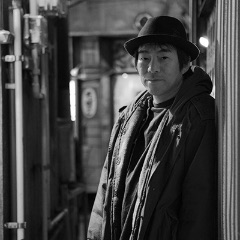
Photo: Rui Sato
Otomo Yoshihide
Musician, born 1959 in Yokohama. Has been attracting a lot of attention around the globe with his endeavors across genres and styles, from experimental music to jazz and pop, while also being renowned for his musical contributions in the realms of cinema, TV and theater. In recent years, his focus has been on musical works and sound installations, as well as collaborations with various artists and regular citizens under the name “Ensembles,” presented in a rather unique concert style. At the same time, he continues to engage in a range of participatory projects. After the Great East Japan Earthquake in 2011, he launched a project in the Fukushima area, where he spent his teens, and in 2012, received a Ministry of Education's Award for Fine Arts for his work on the “Project FUKUSHIMA!” His numerous other awards include a Japan Record Award for the score for the TV program “Amachan” in 2013. Since 2014, Otomo has been devoting himself to Ensembles Asia, launched as a vehicle for establishing a network across Asia through music. He was the artistic director of the Sapporo International Art Festival 2017, and in 2019, director of the reorganized Waraji Matsuri, a popular local festival in Fukushima.
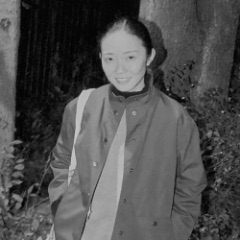
Yuki Kimura
Yuki Kimura was born in 1971 in Kyoto. She completed her graduate studies at Kyoto City University of Arts in 1996. Her installation works have continued to explore the theme of time and dimension in concurrence to the present space where the installations have placed. She continues to exhibit her art work worldwide, major group shows including: California-Pacific Triennial, the Orange County Museum of Art, Newport Beach (2017); “Ocean of images: New Photography 2015,” The Museum of Modern Art, New York (2015) and 30th São Paulo Biennial (2012).

Norimichi Hirakawa
Born in 1982, his interest lies in the most primitive of technologies, calculation. His work is focused on installations that use either mathematical processing itself as conducted through computer programming or the results of that processing. In 2016, he began creating the series datum at a residency at The Kavli Institute for the Physics and Mathematics of the Universe (Kavli IPMU), and datum was shown at the Toyota Municipal Museum of Art and at a pre-event of the Sapporo International Art Festival. In 2017, he created one of the works in that series through a residency at the ALMA telescope, located at Chile’s highest point of approximately 5000 meters and it's awarded as Excellence Award in Art Division of the 22nd Japan Media Arts Festival. He has also participated in creating the work of Japanese artists, such as Ryoji Ikeda and Seiko Mikami, and is the artistic director for ARTSAT: Art and Satellite Project.
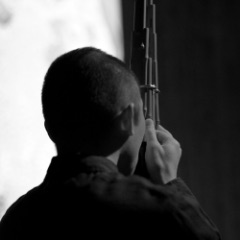
Ko Ishikawa
Sho player Ko Ishikawa studied Japanese traditional Gagaku music under his masters Mayumi Miyata, Hideaki Bunno and Sukeyasu Shiba. He is a member of Reigakusha Gagaku Ensemble. He has been performing not only Gagaku music but also contemporary and experimental music. He is widely acclaimed on the national and international scenes. He had participated in the projects of Yoshihide Otomo, Ryuichi Sakamoto, Mamoru Fujieda, Toshiyuki Omori, Julio Estrada, Evan Parker, Bozzini Quartet, Antoine Beuger, Magnus Grandberg, Giorgos Varoutas.
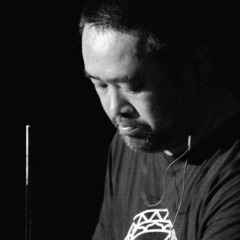
Yoshimitsu Ichiraku
After quitting his longstanding job as a professional drummer in 2012, Ichiraku returned into the spotlight when he unveiled “DORAnome” and “LaserGuitar,” two musical instruments developed together with tkrworks, Roland and Vestax. He spent the last few years developing, building and presenting the self-built “Laser Modular” synthesizer around the world in live performances and workshops, while at one organizing worldwide GIGANOISE, GIGAMODULAR and GIGADISCO festivals. He received an Honorary Mention in the Digital Musics department at Ars Electronica, and was invited to participate in the Venice Biennale and the Expo Zaragoza 2008. In 2019, he attracted public attention with three works that he curated at Art Setouchi. Ichiraku currently lives in Yamaguchi.
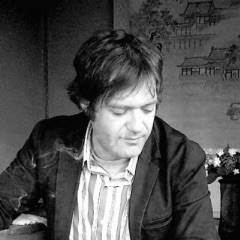
Jim O'Rourke
Born in 1969. He is an American musician and producer. Known for his idiosyncratic tastes, and regarded as something of an expert on modern experimental music, he has released albums of jazz, electronica, noise and guitar rock music. O'Rourke has released a large number of albums and was once a member of Gastr Del Sol with songwriter David Grubbs and The Red Crayola. From 2000 he played bass guitar and guitar with New York City band Sonic Youth; he quit as a full member in 2005 to pursue his interest in filmmaking, but continues to play with them in their side projects.
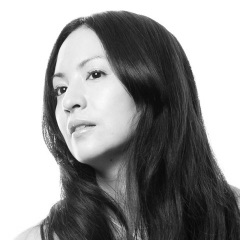
Kahimi Karie
Musician, writer, photographer. Featured on the album “50ans de Saravah” celebrating the 50th anniversary of the establishment of the French label Saravah. Authored the essay Kotori ga utau, watashi mo utau. Shizuka na sora ni hibiku kara (Shufu to Seikatsu-sha). Translations include the French picture book Oyasuminasai (Anonima Studio), and American literature such as Dear Santa (Japanese edition published by Chronicle Books Japan). In 2018, she published her own child-rearing journal Nikitama (Shodensha), and serially contributed photographs and essays to the magazine veggy. Karie currently lives in New York. Having lived abroad for many years, she is particularly conscious about her balanced diet and physical health.
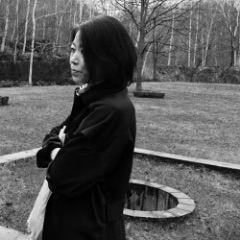
Sachiko M
Sinewave artist, improvised performer, composer. The minimalist sound of “Sine Wave Solo,” released in 2000, instantly put her in the center of the music world’s attention. She went on to win a Golden Nica at Ars Electronica in 2003, and present live performances and sound installations at festivals around the world. The piece “Shiosai no memory” (co-written with Yoshihide Otomo), produced for the TV program “Amachan,” initially inspired her to pursue a career as a composer. Sachiko M curates and directs the Open Gate exhibitions investigating the area between “music” and “art,” and continues to explore various new possibilities.

Axel Dörner
Born 1964 in Cologne, Germany. Studied piano and trumpet (with Malte Burba) at the Musikhochschule, Cologne, Germany. Moved to Berlin in 1994. He has worked together with numerous internationally respected figures in the fields of "Improvised Music", "Composed Contemporary Music", "Jazz" and "Electronic Music". He has developed a unique style of trumpet playing based in part on unusual, often self-invented techniques. Concert tours in Europe, North and South America, Asia, Africa and Australia. Appearance on numerous CD and record releases.
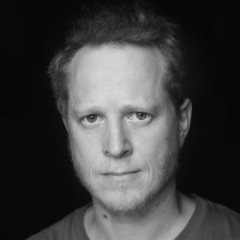
Photo: Alessandro Albert
Martin Brandlmayr
Martin Brandlmayr, (*1971 in Bad Ischl/Austria) works in the fields between improvisation and composition and on the intersection of electronic and acoustic soundworlds. As a drummer he is widely recognized for his distinctive style combining experimental methods and extended techniques with groove elements. Since the mid 90ies he is exploring hidden sounds and tonal aspects on his instrument. He is a member of the groups Polwechsel, Trapist, Kapital Band 1 and became internationally known primarily through the Trio Radian, founded in 1997. He has released 7 albums with Radian since the end of the1990s, 5 of them on the US label Thrill Jockey. In 2018 he received the renowned Karl Sczuka Prize for his radio play "Vive les fantômes"
Yoshihide Otomo (musician): The installation version of “quartets” was created 12 years ago. It was conceived 13 or 14 years ago. Usually, music always has an end, but this piece has a beginning and no end. I had this idea that these performers kept on playing somewhere, so I discussed with Mr. Ito from the very beginning about making a web version. But I was busy and didn't have the opportunity to do it, so it didn't come true. I think we had two exhibitions elsewhere.